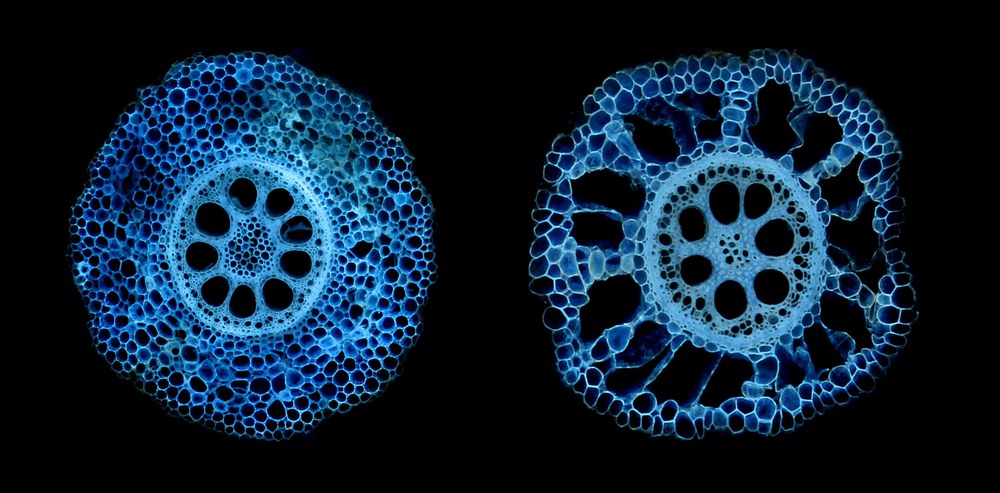
Root cortical aerenchyma formation
Authors
Hannah M. Schneider, Vai S. Lor, Xia Zhang, Patompong Saengwilai, Meredith T. Hanlon, Stephanie P. Klein, Jayne L. Davis, Aditi N. Borkar, Cody L. DePew, Malcolm J. Bennett, Shawn M. Kaeppler, Kathleen M. Brown, Rahul Bhosale, Jonathan P. Lynch
Source
PNAS
Download Options
Abstract
Root anatomical phenotypes present a promising yet underexploited avenue to deliver major improvements in yield and climate resilience of crops by improving water and nutrient uptake. For instance, the formation of root cortical aerenchyma (RCA) significantly increases soil exploration and resource capture by reducing the metabolic costs of root tissue. A key bottleneck in studying such phenotypes has been the lack of robust high-throughput anatomical phenotyping platforms. We exploited a phenotyping approach based on laser ablation tomography (LAT), termed Anatomics, to quantify variation in RCA formation of 436 diverse maize lines in the field. Results revealed a significant and heritable variation for RCA formation. Genome-wide association studies (GWAS) identified a single nucleotide polymorphism (SNP) mapping to a root cortex-expressed gene encoding transcription factor bHLH121. Functional studies identified that the bHLH121 Mu transposon mutant line and CRISPR/Cas9 loss-of-function mutant line showed reduced RCA formation, whereas an overexpression line exhibited significantly greater RCA formation when compared to the wildtype line. Characterization of these lines under suboptimal water and nitrogen availability in multiple soil environments revealed that bHLH121 is required for RCA formation developmentally as well as under studied abiotic stress. Overall functional validation of the bHLH121 gene’s importance in RCA formation provides a new functional marker to select varieties with improved soil exploration and thus yield under suboptimal conditions.
Significance Statement: Root anatomical phenotypes are important for soil resource acquisition, particularly in stressful environments. Using Anatomics (anatomical phenotyping) coupled with GWAS, we identified and then validated a bHLH transcription factor that regulates the formation of root cortical aerenchyma, an important phenotype for water and nutrient acquisition. Understanding the genetic regulation of root anatomical phenotypes promises to accelerate the breeding of crop cultivars with improved stress tolerance, resilience, and carbon sequestration.

